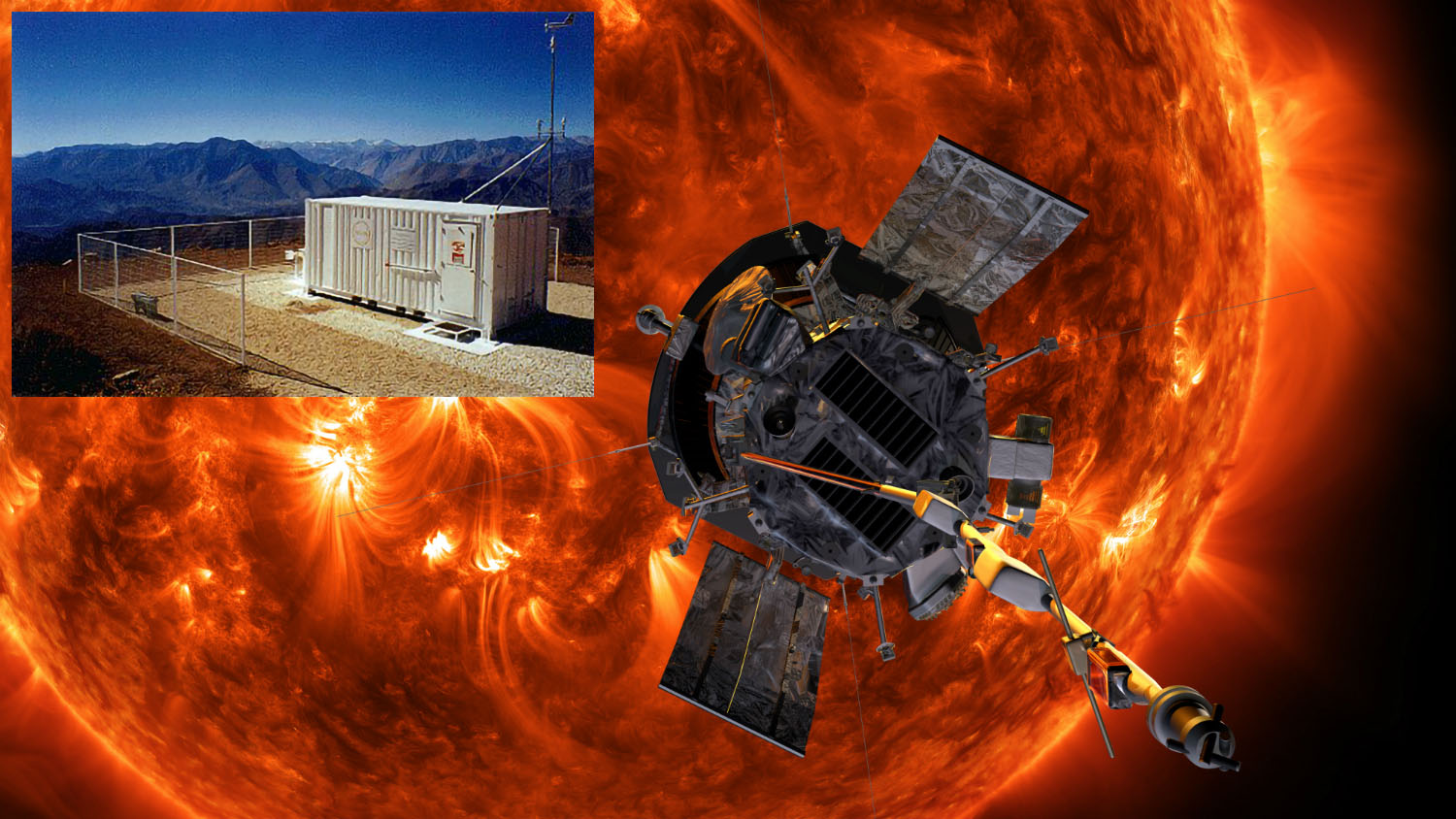NSO: Exploring the Sources of the Solar Wind with Parker Solar Probe and NSO/GONG

Illustration of Parker Solar Probe and a photo of one of the GONG stations at the Cerro Tololo Inter-American Observatory in Chile. Credits: NSO/NSF/AURA and NASA/Johns Hopkins APL/Steve Gribben
By Sam Badman – University of California Berkeley
In August 2018 NASA launched Parker Solar Probe, humanity’s mission to touch the Sun. In November, PSP flew close to the Sun for the first time (getting more than 5x closer to the Sun than the Earth), as it traveled, one of it’s scientific instruments measured the magnetic field it was experiencing. We saw the magnetic field get stronger and stronger as we got closer and closer to the Sun proportional to the square of the distance to the Sun, a trend predicted by Eugene Parker over 50 years ago! Additionally, we observed the field flip between pointing towards and away from the Sun (otherwise known as the magnetic polarity). Some of these flips were very quick (taking place in seconds or minutes) and have become known as “switchbacks” and were a totally unexpected new discovery identified in the first results papers from the mission [Bale 2019, Kasper 2019].
In our work [Badman 2020] we focused on the longer flips which took place days or weeks apart, which tell us about the structure of the Sun’s magnetic field at large scales. We used magnetic models of the Sun using measurements taken by NSF’s Global Oscillations Network Group (GONG) to explain why this signature was measured. In doing so, we figured out which parts of the Sun were generating the plasma flowing past PSP during this time. In particular, we found for this first close flyby the solar wind was coming from a small region near the Sun’s equator called an equatorial coronal hole.
The Sun is always spewing out hot plasma in all directions, called the solar wind, filling up space. Some part of that plasma streams past the Earth. We’re always being buffeted by the solar wind but mostly we’re protected from ill effects by the Earth’s magnetic field. Sometimes the Sun will send out a burst of radiation towards the Earth, or the characteristics of the type of the solar wind reaching the Earth will change suddenly. When a rapid change like this occurs, it can cause space weather events which can damage satellites, affect radio communications and even damage our electrical grids. Predicting this is really important and to make these predictions, we need to know the path that these events will take from the Sun to the Earth. Most eruptions from the Sun are guided outwards by magnetic field lines. Only certain magnetic field lines “escape” the Sun, many close back over like the loops you see with iron filings and a bar magnet. We need to know the location of these open, or escaping, fieldlines to predict where transients can escape from and where they might get to in space, including the Earth. By explaining what we measure with Parker Solar Probe, we can test these connections and the locations of “open field lines” and improve our models to help with space weather prediction.
We use a magnetic field model (called the Potential Field Source Surface model, freely accessible in the python programming language [Stansby 2020]) of the corona using data from NSF’s GONG, which is operated by the National Solar Observatory. GONG measures the magnetic field on the surface of the sun. In particular, we use a specific GONG data product: zero-point corrected magnetograms, first created for space weather forecasting purposes. This is particularly important for our work as these data carefully treat small, hard to see signals near zero field strength. These signals are vital for capturing open field lines which, unlike sunspots or solar active regions, are often rooted in regions of weaker magnetic field.
Parker Solar Probe gets really, really close to the Sun and so it is especially exciting to try to explain the solar wind it sees since there is less uncertainty of the solar winds journey between the corona and PSP, and even more uniquely, PSP gets so fast in its orbit that it briefly “catches up” to the Sun (most spacecraft orbit the Sun much slower than the speed at which the Sun rotates) and drifts over the same spot for many days. This means if we figure out where the solar wind is coming from at this time, we can measure how it changes in time as well as space and use all this new information to learn more about how the Sun’s atmosphere escapes out into space, for example to investigate where the exciting switchbacks come from.
